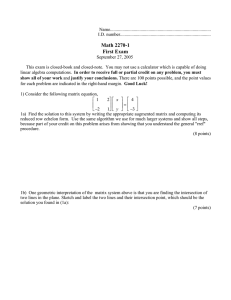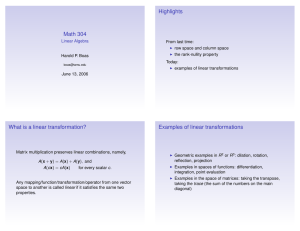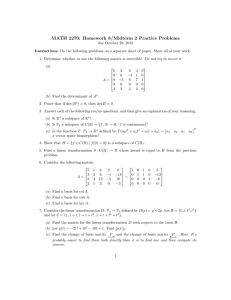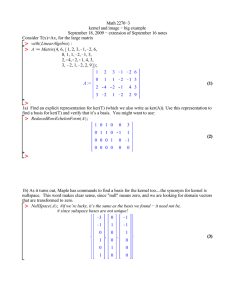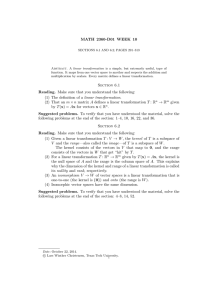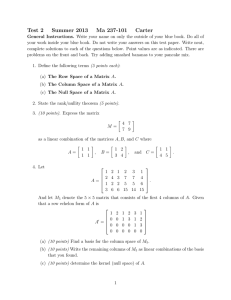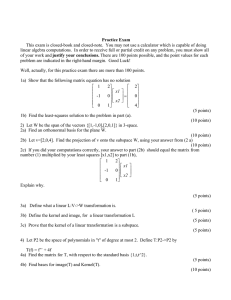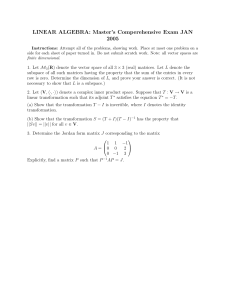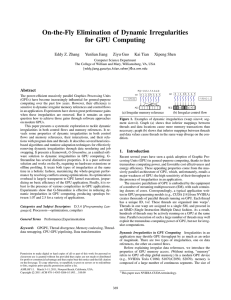Name......................................................................................... I.D. number................................................................................
advertisement
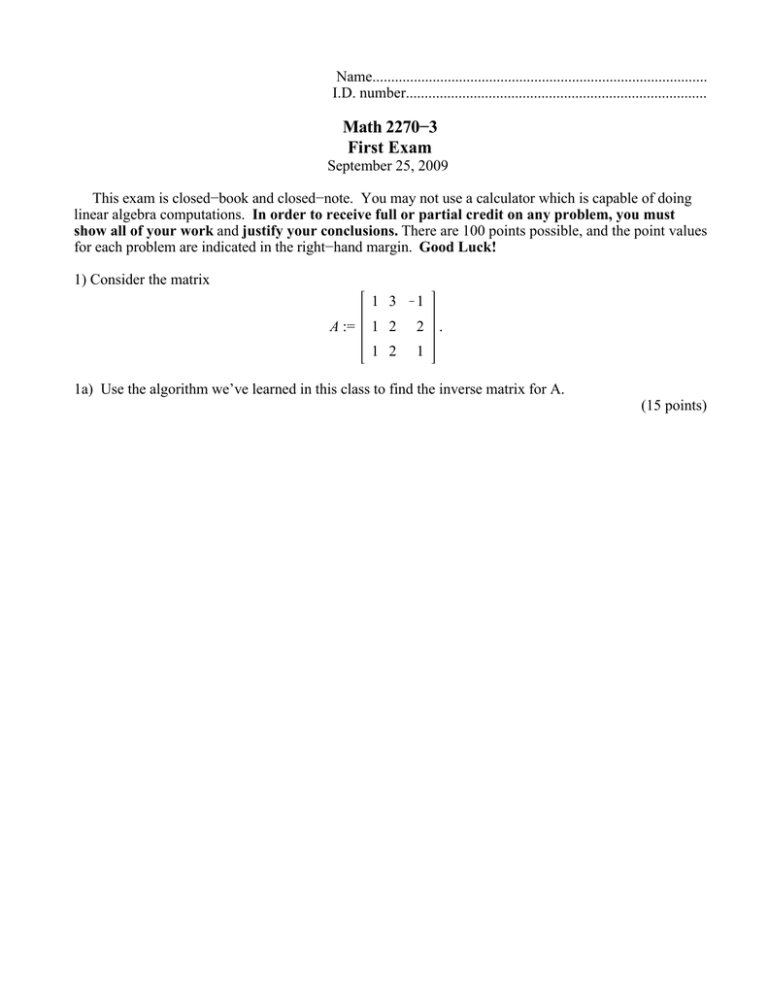
Name......................................................................................... I.D. number................................................................................ Math 2270−3 First Exam September 25, 2009 This exam is closed−book and closed−note. You may not use a calculator which is capable of doing linear algebra computations. In order to receive full or partial credit on any problem, you must show all of your work and justify your conclusions. There are 100 points possible, and the point values for each problem are indicated in the right−hand margin. Good Luck! 1) Consider the matrix A := 1 3 1 1 2 2 1 2 1 . 1a) Use the algorithm we’ve learned in this class to find the inverse matrix for A. (15 points) 1b) Use your work from (1a) to find the solution to 1 3 1 x1 1 1 2 2 x2 = 3 1 2 1 x3 2 . (7 points) 1c) The algebraic system from (1b) has two geometric interpretations that we’ve discussed: one involves intersecting planes, and the other is a linear combination problem. Explain these two interpretations by writing the system in two different ways. Explain what the solution vector x means in each case. (8 points) 3) Here is a matrix B and its reduced row echelon form: 1 3 1 1 2 1 B := 1 3 0 1 3 4 2 6 1 4 7 11 RREF 1 3 0 1 3 4 0 0 1 2 1 3 0 0 0 0 0 0 3a) Find a basis for the image of the transformation T(x)=Bx, using appropriate column vectors above. Justify your work. (10 points) 3b) Find a basis for the kernel of T. Justify your work. (10 points) 3c) A different way of finding a basis for the image of T is to do elementary column operations on the columns of B, since these don’t change the column span. As we discussed in class, you can follow this procedure to compute the "reduced column echelon form" of B. Here is the result: 1 3 1 1 2 1 1 0 0 0 0 0 B := 1 3 0 1 3 4 RCEF 0 1 0 0 0 0 2 6 1 4 7 11 1 3 0 0 0 0 Use the information above to find a different basis for the image of T than the one you constructed in (3a). Show how your two different bases for the image are related. (5 points) 3d) State the rank + nullity theorem for matrix transformations. Verify that the theorem holds in this example. (5 points) 4) True−False. Two points for correct answer, and three points for justification, on each problem. (30 points) 4a) If A and B are square matrices of the same size, then A 4b) There is a linear transformation T: R2 B A B = A2 B2 R2 for which the kernel of T coincides with the image of T. 4c) The plane in 3−space whose points satisfy the equation x 2 y 3 z=6 3 is a subspace of R . 4d) If T:R2 R3 is a linear transformation, and if T 1 1 = 0 1 ,T 2 2 1 = 1 0 3 then it must be true that T 3 1 4 = 2 . 7 4e) Let W is a subspace of dimension k. Then any collection of exactly k linearly independent vectors in W is a basis for W. 4f) If the kernel of a linear transformation T(x)=Ax consists of the zero vector only, then the columns of the matrix A are a basis for image(T).
